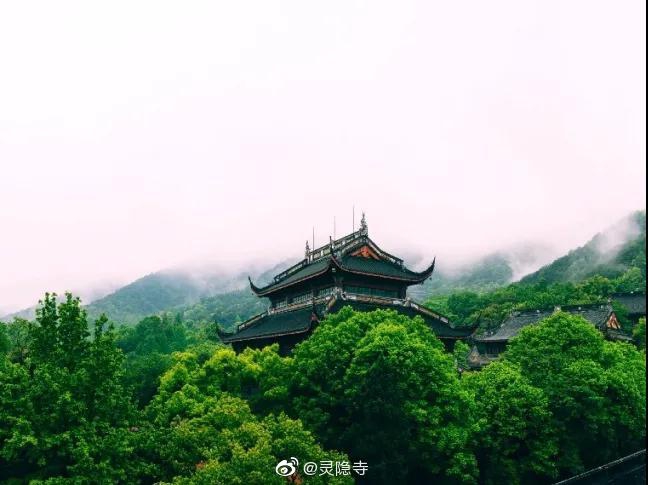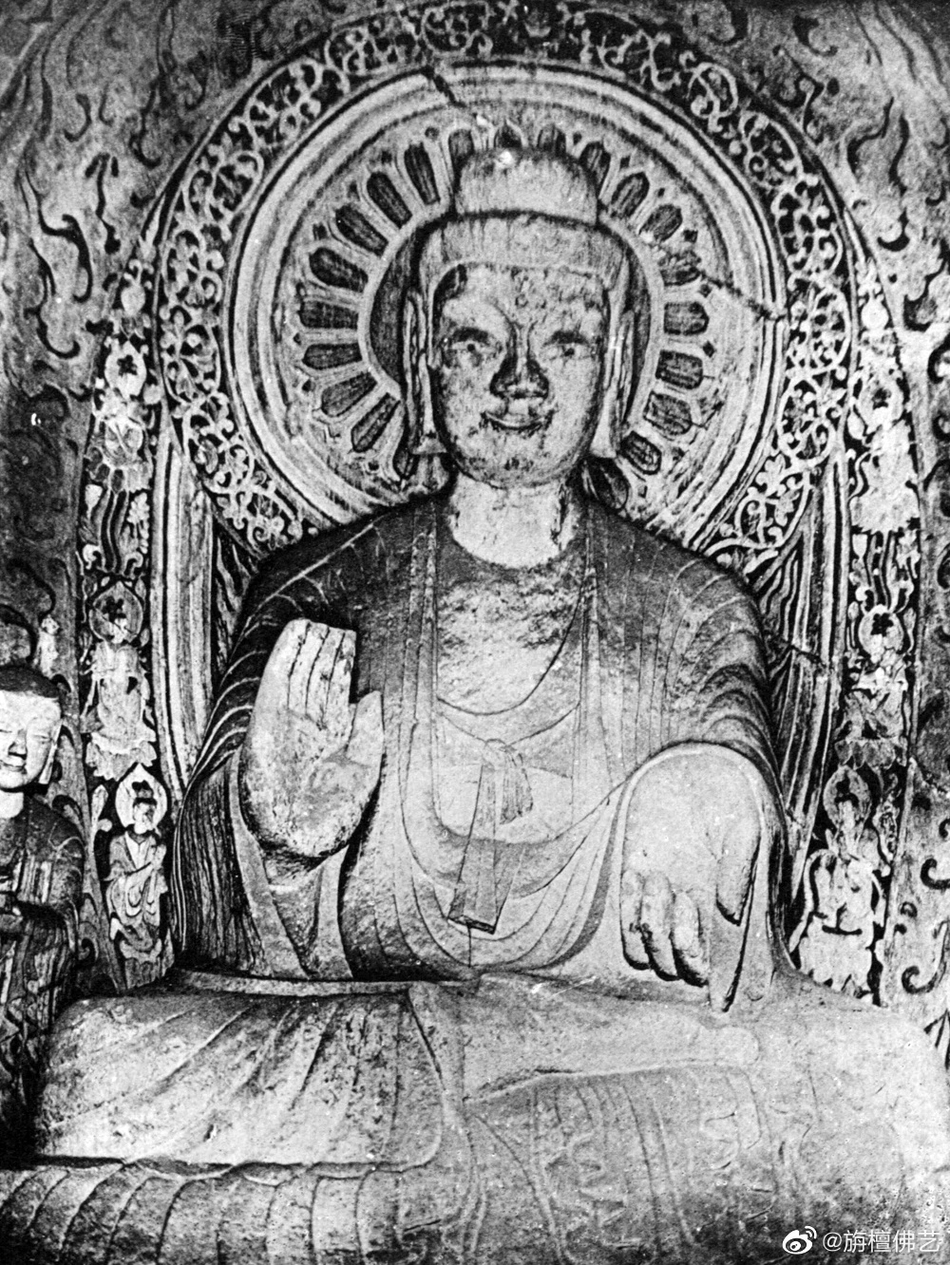
市政厅英文
"市政厅"的英文单词是 "City Hall"。"City Hall" 是指城市政府的办公场所,也是市政府的总部。它通常是一个大型建筑物,用于管理和运营城市的各项事务。
拓展:
除了作为一个具体的地点名称,"City Hall" 还可以用来指代城市政府的行政机构和官员。在这个意义上,"City Hall" 是一个集中管理和决策城市事务的机构,负责制定政策、提供公共服务和维护城市的运作。
"City Hall" 在英语中也常用于描述和讨论城市政府的工作和活动。例如,人们可以说 "The City Hall is responsible for maintaining public infrastructure."(市政厅负责维护公共基础设施。)或者 "The mayor will be giving a speech at City Hall tomorrow."(市长将在明天在市政厅发表演讲。)
此外,"City Hall" 还可以用来指代一座城市的象征性建筑物。许多城市都有独特的市政厅建筑,代表着城市的历史、文化和权力。这些建筑往往成为城市的地标和旅游景点。
City hall是什么意思
City hall
词典结果:
city hall[英][ˈsiti hɔ:l][美][ˈsɪti hɔl]
n.市政厅;
复数:city halls
以上结果来自金山词霸
例句:
1.
Loyalists clash with police officers as they try to force their way into belfast city hall.
当警察试图阻挡示威者进入贝尔法斯特市政厅的时候,他们与警察发生了冲突。
2.
One day city hall may be as packed with screens as a formula 1 pit.
一天,市政府可能会像一级方程式赛车一样,全部装上大屏幕。
city hall中文翻译
London (pronounced [ˈlʌndən]) is the capital city of England and the United Kingdom. An important settlement for around two millennia, London is today one of the world's most important business and financial centres, [1] and its influence in politics, culture, education, entertainment, media, fashion, sport and the arts all contribute to its status as one of the key global cities.
London is the most populous city in the European Union[2] with a population of 7.5 million and a metropolitan area population of between 12 and 14 million. Its population is very cosmopolitan, drawing from a diverse range of peoples, cultures and religions, speaking over 300 different languages. Residents of London are referred to as Londoners.
London is an international transport hub, with five international airports and a large port. It serves as the largest aviation hub in the world, [3] and its principal airport, Heathrow, carries more international passengers than any other. [4]
London is a major tourist destination - counting iconic landmarks such as the Houses of Parliament, Tower Bridge, the Tower of London, Westminster Abbey, Buckingham Palace and the London Eye amongst its many attractions, along with famous institutions such as the British Museum and the National Gallery.
[edit] Defining London
[edit] Area
Today, "London" usually refers to the area known as Greater London which is also the London region of England. At the heart of the conurbation is the small, ancient City of London which was historically the entirety of the city. Londoners generally refer to the City of London simply as "The City" or the "Square Mile". London's metropolitan area grew considerably during the Victorian era and again during the Interwar period with expansion halted in the 1940s by World War II and Green Belt legislation and has been largely static since.
The extent of the London postal district, Metropolitan Police District, local government area, London transport area, urban sprawl, coverage of the London telephone area code and metropolitan area have rarely been coterminous and are not currently. The area delimited by the orbital M25 motorway is sometimes used to define the "London area" and the Greater London boundary has been aligned to it in places. London is split for some purposes into Inner London and Outer London.
The co-ordinates of the nominal centre of London (traditionally considered to be the original Charing Cross, near the junction of Trafalgar Square and Whitehall) are approximately 51°30′29〃N, 00°07′29〃W. The Romans may have marked the centre of Londinium with the London Stone in the City.
[edit] Status
The entire London urban area may be classed as a "city" using a geographical definition, but politically it is not so. Officially, London is a region containing two smaller cities within its built-up area: the City of London and the City of Westminster (see City status in the UK).
Unlike most capital cities, London's status as the capital of the UK has never been granted or confirmed officially — by statute or in written form. Its position as the capital has formed through constitutional convention, making its position as de facto capital a part of the UK's unwritten constitution.
[edit] Geography and climate
Main articles: Geography of London and Climate of London
London as seen at night by the International Space Station.
[edit] Topography and climate
Greater London covers an area of 609 square miles (1,579 km²), making it one of the world's largest cities by area. Its primary geographical feature is the Thames, a navigable river which crosses the city from the southwest to the east. The Thames Valley is a floodplain surrounded by gently rolling hills such as Parliament Hill and Primrose Hill. These hills presented no significant obstacle to the growth of London from its origins as a port on the north side of the river, and therefore London is roughly circular.
The Thames was once a much broader, shallower river with extensive marshlands. It has been extensively embanked, and many of its London tributaries now flow underground. The Thames is a tidal river, and London is vulnerable to flooding.[5] The threat has increased over time due to a slow but continuous rise in high water level by the slow 'tilting' of Britain (up in the north and down in the south) caused by post-glacial rebound. In 1974, a decade of work began on the construction of the Thames Barrier across the Thames at Woolwich to deal with this threat, but a more substantial barrier further downstream may be necessary in the near future.
London has a temperate climate with regular but generally light precipitation throughout the year - London is in fact amongst the driest of Europe's capitals.[citation needed] The warmest month is July, with an average temperature range at Greenwich of 13.6 °C to 22.8 °C (56.5 to 73.0 °F). The coolest month is January, averaging 2.4 °C to 7.9 °C (35.6 to 46.2 °F). Average annual precipitation is 583.6 mm(22.98 in), with February on average the driest month.[6] Snow is uncommon, particularly because heat from the urban area can make London 5 °C (9 °F) hotter than the surrounding areas in winter. London is in USDA Hardiness zone 9, and AHS Heat Zone 2.
Month Jan Feb Mar Apr May Jun Jul Aug Sep Oct Nov Dec
Avg high °C (°F) 7.2 (45.0) 7.6 (45.7) 10.3 (50.5) 13.0 (55.4) 17.0 (62.6) 20.3 (68.5) 22.3 (72.1) 21.9 (71.4) 19.1 (66.4) 15.2 (59.4) 10.4 (50.7) 8.2 (46.8)
Avg low temperature °C (°F) 2.4 (36.3) 2.5 (36.5) 3.8 (38.8) 5.6 (42.1) 8.7 (47.7) 11.6 (52.9) 13.7 (56.7) 13.4 (56.1) 11.4 (52.5) 8.9 (48.0) 5.1 (41.2) 3.4 (38.1)
Source: Worldweather.org
[edit] Districts
See also: Inner London and Outer London
Main articles: Central London, City of London, West End, East London, East End, Docklands, West London, North London, South London
Part of the London skyline looking east from the South Bank of the Thames.London's vast urban area is often described using a large set of district names (e.g. Bloomsbury, Mayfair, Whitechapel). These are for the most part informal designations which have become commonplace through tradition, each referring to a neighbourhood with its own distinctive character, but no official boundaries (often overlapping). One area of London which does have a strict definition is the City of London (usually just called The City), the largest financial district and central business district (CBD) in Europe. The City has its own governance and boundaries, giving it a distinctive status as the only completely autonomous local authority in London. London's other financial hub is the Docklands area in the east of the city, dominated by the Canary Wharf complex, whilst many other businesses locate in the City of Westminster which is the home of the UK's national government.
The West End is London's main entertainment and shopping district, with locations such as Oxford Street, Leicester Square, Covent Garden and Piccadilly Circus acting as tourist magnets. The West London area is known for fashionable and expensive residential areas such as Notting Hill, Kensington and Chelsea — where some propeties can sell for £5,000,000 and above.
Meanwhile, the eastern side of London contains the East End — the area closest to the original Port of London, known for its high immigrant population, as well as for being one of the poorest areas in London. The surrounding East London area saw much of London's early industrial development; now, brownfield sites throughout the area are being redeveloped, including areas along the Thames (the Thames Gateway) and up the Lower Lea Valley, which is being developed into the Olympic Park for the 2012 Olympics. North London and South London are informal divisions of the capital made by the River Thames, although they can define varying areas.
[edit] Built environment
See also: Architecture in London and List of tallest structures in London
Sunset over the City, with the Docklands development in the background.The density of London varies, with high employment density in the central area, high residential densities in inner London and lower densities in the suburbs. In the dense areas, most of the concentration is achieved with medium-rise buildings; high-rise buildings are fairly rare, even in employment centres. Thus, skyscrapers such as the City's "Gherkin", Tower 42 and One Canada Square stand out due to both their height and their relative rarity.
However, developments of tall buildings are encouraged in the London Plan, which will lead to the erection of many new skyscrapers over the next few years as London goes through a high-rise boom, particularly in the two financial centres, the City of London and Canary Wharf. The 72-storey, 310 m "Shard London Bridge" by London Bridge station, the 288 m Bishopsgate Tower and around 30 other skyscrapers over 150 m are either proposed or approved and could transform the city's skyline.
The buildings of London are a collection of different styles accumulated mostly over the time since the Great Fire in 1666. Although the City is characterised by 18th and 19th century architecture, there are a number of examples of more modern construction, such as the Lloyd's building and 30 St Mary Axe. London's focal point is the mid-19th century Trafalgar Square, marked with Nelson's Column and the site of major demonstrations and street events in the capital.
[edit] Parks and gardens
Main articles: Parks and open spaces in London and Royal Parks of London
London has a number of open spaces situated throughout the city. The largest of these in the central area are the Royal Parks of Hyde Park and its neighbours Kensington Gardens and Holland Park Gardens at the western edge of central London, and Regent's Park on the northern edge. More central places are the smaller Royal Parks of Green Park and St. James's Park. Hyde Park in particular is popular for sports and sometimes hosts open-air concerts. A number of large parks outside the city centre are also notable, including the remaining Royal Parks of Greenwich Park to the south east, and Bushy Park and Richmond Park to the south west. Some more informal, semi-natural open spaces also exist, including the 791-acre Hampstead Heath of north London.
[edit] History
Main article: History of London
[edit] Early London
Although there is some evidence of scattered pre-Roman settlement in the area, the first major settlement was founded by the Romans in AD 43, following the Roman invasion of Britain. This settlement was called Londinium, commonly believed to be the origin of the present-day name, although a Celtic origin is also possible.
Westminster Abbey is one of London's oldest and most important buildingsThe first London lasted for just seventeen years. Around AD 61, the Iceni tribe of Celts led by Queen Boudica stormed London, burning it to the ground. The next, heavily-planned incarnation of the city prospered and superseded Colchester as the capital of the Roman province of Britannia in AD 100. At its height in the 2nd century AD, Roman London had a population of around 60,000. However, by the 3rd century AD, the city started a slow decline due to trouble in the Roman Empire, and by the 5th century AD, it was largely abandoned.
By 600 AD, the Anglo-Saxons had created a new settlement (Lundenwic) about 1 km upstream from the old Roman city, around what is now Covent Garden. There was probably a harbour at the mouth of the River Fleet for fishing and trading, and this trading grew until disaster struck in 851 AD, when the city's defences were overcome by a massive Viking raid and it was razed to the ground. A Viking occupation twenty years later was short-lived, and Alfred the Great, the new King of England, established peace and moved the settlement within the defensive walls of the old Roman city (then called Lundenburgh). The original city became Ealdwīc ("old city"), a name surviving to the present day as Aldwych.
Subsequently, under the control of various English kings, London once again prospered as an international trading centre and political arena. However, Viking raids began again in the late 10th century, and reached a head in 1013 when they besieged the city under Danish King Canute and forced English King Ethelred the Unready to flee. In a retaliatory attack, Ethelred's army achieved victory by pulling down London Bridge with the Danish garrison on top, and English control was re-established.
Canute took control of the English throne in 1017, controlling the city and country until 1042, when his death resulted in a reversion to Anglo-Saxon control under his pious step-son Edward the Confessor, who re-founded Westminster Abbey and the adjacent Palace of Westminster. By this time, London had become the largest and most prosperous city in England, although the official seat of government was still at Winchester.
[edit] Norman and medieval London
The Great Fire of London destroyed large parts of the city in 1666.Following a victory at the Battle of Hastings, William the Conqueror, the then Duke of Normandy, was crowned King of England in the newly-finished Westminster Abbey on Christmas Day 1066. William granted the citizens of London special privileges, whilst building a castle in the southeast corner of the city to keep them under control. This castle was expanded by later kings and is now known as the Tower of London, serving first as a royal residence and later as a prison.
In 1097, William II began the building of Westminster Hall, close by the abbey of the same name. The hall proved the basis of a new Palace of Westminster, the prime royal residence throughout the Middle Ages. Westminster became the seat of the royal court and government (persisting until the present day), whilst its distinct neighbour, the City of London, was a centre of trade and commerce and flourished under its own unique administration, the Corporation of London. Eventually, the adjacent cities grew together and formed the basis of modern central London, superseding Winchester as capital of England in the 12th century.
After the successful defeat of the Spanish Armada in 1588, political stability in England allowed London to grow further. In 1603, James VI of Scotland came to the throne of England, essentially uniting the two countries. His enactment of harsh anti-Catholic laws made him unpopular, and an assassination attempt was made on 5 November 1605 — the famous Gunpowder Plot.
Plague caused extensive problems for London in the early 17th century, culminating in the Great Plague in 1665-1666. This was the last major outbreak in Europe, possibly thanks to the disastrous fire of 1666. The Great Fire of London broke out in the original City and quickly swept through London's wooden buildings, destroying large swathes of the city (and killing off much of the disease-carrying rat population). Rebuilding took over ten years.
[edit] Rise of modern London
A London street hit during the Blitz of World War IILondon's growth accelerated in the 18th century, and was the world's largest city from about 1831 to 1925 [7]. This growth was aided from 1836 by London's first railways which put small countryside towns within easy reach of the city. The rail network expanded very rapidly, and caused these places to grow whilst London itself expanded into surrounding fields, merging with neighbouring settlements such as Kensington. Rising traffic congestion on city centre roads led to the creation of the world's first metro system — the London Underground — in 1863, driving yet further expansion and urbanisation. [8]
London's local government system struggled to cope with the rapid growth, especially in providing the city with adequate infrastructure. Between 1855 and 1889, the Metropolitan Board of Works oversaw infrastructure expansion. It was then replaced by the County of London, overseen by the London County Council, London's first elected city-wide administration.
The British Airways London Eye, one of the many symbols of modern London.The Blitz and other bombing by the German Luftwaffe during World War II killed over 30,000 Londoners and flattened large tracts of housing and other buildings across London. The rebuilding during the 1950s, 1960s and 1970s was characterised by a wide range of architectural styles and has resulted in a lack of architectural unity that has become part of London's character. In 1965 London's political boundaries were expanded to take into account the growth of the urban area outside the County of London's borders. The expanded area was called Greater London and was administered by the Greater London Council.
In the decades following World War II, large-scale immigration from Commonwealth countries and beyond, transformed London into one of the most racially and culturally diverse cities in Europe. Integration of the new immigrants was not always smooth, with events such as the Brixton Riots in the 1980s.
An economic revival from the 1980s onwards re-established London's position as an eminent trading centre. However, as the seat of government and the most important city in the UK, it has been subjected to bouts of terrorism. IRA bombers sought to pressure the government into negotiations over Northern Ireland, frequently disrupting city activities with bomb threats — some of which were carried out — until their 1997 ceasefire. More recently, a series of coordinated bomb attacks were carried out by Islamic extremist suicide bombers on the public transport network on 7 July 2005 — just 24 hours after London was awarded the 2012 Summer Olympics.
[edit] Government
See also: :Category:London Government
[edit] Local government
City Hall at night, headquarters of the Greater London Authority.The administration of London takes place in two tiers — a city-wide, strategic tier and a local tier. City-wide administration is coordinated by the Greater London Authority (GLA), whilst local administration is carried out by 33 smaller districts.
The GLA is responsible for strategic planning, policing, the fire service, transport and economic development. It consists of two elected parts — the Mayor of London, who has executive powers, and the London Assembly, who scrutinise the Mayor's decisions and can accept or reject his budget proposals each year. The GLA is a recent organisation, having been set up in 2000 to replace the similar Greater London Council (GLC) which was abolished in 1986.
The current Mayor of London is Ken Livingstone, who is in his second term of office. He was elected in 2000 as an independent candidate and again in 2004 as a Labour candidate. Ken Livingstone was also the leader of the GLC when it was abolished.
The 33 local districts are the 32 London boroughs and the City of London. They are responsible for local services not overseen by the GLA, such as local planning, schools, social services, and refuse collection. The London boroughs each have a council which is elected every four years by local residents. The City of London does not have a conventional local authority, but is governed by the historic Corporation of London which is elected by both residents and businesses, and which has existed more or less unchanged since the Middle Ages.
The City of London also has its own police force: The City of London Police, which is independent of the Metropolitan Police Service which covers the rest of Greater London.
Health services in London are managed by the national government through the National Health Service, which is controlled and administered in London by five Strategic Health Authorities[9].
[edit] National government
The Houses of Parliament at duskLondon is the home of the Government of the United Kingdom which is located around the Houses of Parli http://baike.baidu.com/view/27242.htm
the city hall
斯德哥尔摩市政厅位于瑞典首都市中心的梅拉伦湖畔,是斯德哥尔摩的形象和代表,也是市政会议的召开地和市府公务的办公场所。这座宏伟壮观、设计新颖的建筑物,外墙由800万块红砖砌成,在高低错落、虚实相谐中保持着北欧传统古典建筑的诗情画意。其钟楼高106米,估计设计在北欧四国中最高。尖塔顶部有3个镀金皇冠,代表瑞典、丹麦、挪威三国人民的合作无间。一层的蓝厅:由于是举行诺贝尔晚宴的所在地而成为市政厅里最著名的房间,每年12月10日晚宴举行时,都会有上百部相机拍下人们的一举一动,毫不夸张地说,蓝厅的每一个角落都曾被摄影胶片记录过。于是,《未知之美》使用了一种别致的手法:人物因流动而显得有些模糊,但室内的建筑却依旧沉稳、清晰。如果用“铁打的营盘流水的兵”来解读这幅照片,则最恰当不过了。的确,有着100多年历史的诺贝尔奖,光荣与遗憾共存,赞誉与轻视同在,许多获奖者的名字因为时间久远几乎被人们淡忘了,但诺贝尔奖本身及见证其历史的市政厅却至今备受瞩目。二层的斯德哥尔摩市议会大厅,是最具特色且最漂亮的是大厅内船形的屋顶。据说当初设计师并未想把屋顶建成现在的样子,但在即将完工时却发现,还没来得及铺设顶棚的屋顶很像一艘倒扣着的船,这倒很符合北欧维京时代的建筑风格,于是,设计师改变主意,又在屋顶上画出日月星辰,以表示议会所探讨的话题,没有见不得光的内容。在多数人的眼中,这座大厅屋顶的美丽在于立体的船形,可在《未知之美》中,呈现给人们的却是一幅平面,虽然纵深感消失了,但挤压在一起的日月星辰却体现了另外一种美,这与敦煌壁画颇有些神似,感觉色彩充盈的咫尺之间,画外的天地却是广阔无限。瑞典人把斯德哥尔摩市政厅当作是自己的骄傲,因为它不仅是这个国家乃至整个北欧的标志性建筑,还是每年举行诺贝尔晚宴的地方。但奇怪的是,瑞典人却从未出版过一本专门介绍斯德哥尔摩市政厅的摄影集。问起原因,瑞典人回答说,他们对市政厅太熟悉了,专门拍摄一个影集毫无必要。直到最近一本叫《未知之美》摄影集的出版改变了这种看法。
cityhall新加坡
坐地铁绿线到City Hall(注意,中间有个丹那美拉Tanah Merah这一站,不要下来哦,那里有支线去巴西立的。),到City Hall再乘红线到乌节路,然后需要步行大约600米。需要49分钟总花费约S$1.69,可以省不少钱,如果是路痴的话建议还是打车吧。
还可以直接打车,大约S$25.30,需要20分钟左右可以抵达。
旅游攻略https://wwW.caoYuAntIANLU.ORg











